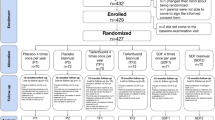Abstract
This paper reports the findings from a research project named FiCTION (Filling Children's Teeth: Indicated or Not?).
Design FiCTION was a multi-centre, parallel-group, patient-randomised controlled trial comparing the effectiveness of three treatment strategies. There were three strategies within the trial: conventional caries removal and restoration plus prevention (C+P); biological sealing-in caries plus prevention (B+P); and prevention alone (PA).
Case selection Children aged 3-7 years with at least one asymptomatic primary molar carious into dentine were included in the study. Participants were randomly allocated to one of the three treatment strategies. Dental professional's (DPs) attended one day training for treatment delivery. Seventy two practices randomised at least one participant. Ten practices withdrew but data collected to the withdrawal date were included in the analysis. The project ran for 3 years between 2012 and 2015. One thousand and fifty eight participants (C+P:352; B+P:352; PA:354) from 68 practices were included in the analysis set. Baseline demographic and clinical characteristics for each arm of the study were balanced.
During routine practice visits data were collected on a case report form (CRF). The data included:
A. Co-primary outcomes: pain due to caries and evidence of dental infection (without radiographic evidence)
B. Secondary outcomes: cost effectiveness, oral health related quality of life (COHRQOL), parental and caregivers perception questionnaire (P-CPQ-16), modified child dental anxiety scale, child and parent-reported anticipatory and treatment-related anxiety, caries incidence at baseline and final visit, qualitative views of parents/carers and DPs.
Sound methodology was described in the narrative of the paper. The median follow-up period was 33.8 months (IQR 23.8, 36.7).
Results For the co-primary outcomes the proportions of participants with at least one episode of dental pain and/or infection were: C+P 42%, B+P 40%, PA 45%. When comparing C+P with B+P and PA, there were no significant observed differences, adjusted risk difference (97.5%CI): B+P vs C+P -2%(-10%, 6%), PA vs C+P 4% (-4%, 12%). The number of episodes of dental pain and/or infection were C+P 0.62 (sd 0.95), B+P 0.58 (sd 0.87), PA 0.72 (sd 0.98). When comparing C+P with B+P and PA no significant differences were observed, adjusted incident rate ratio (97.5% CI): B+P vs C+P 0.95 (0.75, 1.21), PA vs C+P 1.18 (0.94, 1.48).
Secondary outcomes:
• Cost effectiveness, PA was the least costly but least effective for both co-primary outcomes with little evidence in this paper as to how and why B+P and C+P would provide greater benefits
• COHRQOL, P-CPQ-16, anxiety showed no statistical differences
• Parent reported anticipatory anxiety showed differences between PA vs C+P; 6% lower in the PA arm, adjusted risk difference -0.06 ((97.5% CI): -0.11 to -0.003)
• Caries incidence showed no differences in the caries in primary or first permanent molars
• Qualitative views showed that all three approaches were generally acceptable but trust in the dental professional played a significant role. Local anaesthesia and dental extractions were generally viewed more negatively.
Conclusions There were no statistical differences between the three strategies for the co-primary outcomes, namely the incidence or number of episodes of dental pain and/or infection experienced by the study participants. The secondary outcomes suggest less anticipatory anxiety in the PA arm of the trial and that local anaesthesia and dental extractions were viewed negatively.
This is a preview of subscription content, access via your institution
Access options
Subscribe to this journal
Receive 4 print issues and online access
$259.00 per year
only $64.75 per issue
Buy this article
- Purchase on Springer Link
- Instant access to full article PDF
Prices may be subject to local taxes which are calculated during checkout
Similar content being viewed by others
References
Richards W. Parental responsibility Br Dent J 2003; 194: 3-4.
Letter to the Editor. Community Dent Health 2006; 23: 124-125.
Morgan M, Monaghan N. Picture of oral health 2017: Dental caries in 5 year olds (2015/2016). 2017. Cardiff University. Available at https://www.cardiff.ac.uk/__data/assets/word_doc/0019/801820/Picture-of-Oral-Health-2017_final-report-for-WOHIU-website.docx (accessed August 2020).
Public Health England. National Dental Epidemiology Programme for England: Oral Health of five year old children 2017 A report on the inequalities found in the prevalence and severity of dental decay. 2018. Available at https://assets.publishing.service.gov.uk/government/uploads/system/uploads/attachment_data/file/768368/NDEP_for_England_OH_Survey_5yr_2017_Report.pdf (accessed August 2020).
Pine C M, Adair P M, Burnside G et al. Dental RECUR Randomized Trial to Prevent Caries Recurrence in Children. J Dent Res 2020; 99: 168-174.
Author information
Authors and Affiliations
Rights and permissions
About this article
Cite this article
Richards, W. What should we be doing for children in our general practices?. Evid Based Dent 21, 100–101 (2020). https://doi.org/10.1038/s41432-020-0121-7
Published:
Issue Date:
DOI: https://doi.org/10.1038/s41432-020-0121-7



